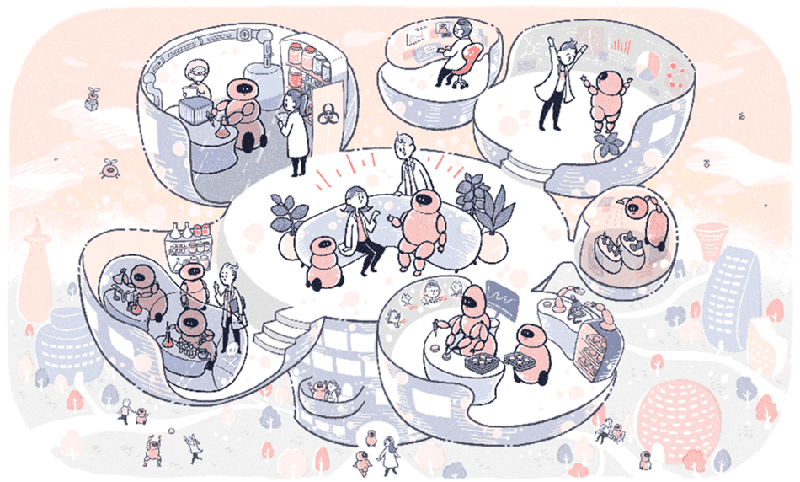R&D Project

Goal 3 R&D Projects (Selected in FY2020)Co-evolution of Human and AI-Robots to Expand Science Frontiers
Project manager (PM)HARADA KanakoProfessor, Graduate Schools of Medicine/Engineering, The University of Tokyo
Summary of the project
This project aims to develop AI-robots capable of conducting scientific experiments in challenging environments (e.g. in a hazardous atmosphere, or in a micro-scale setup), while interacting with scientists as peers. AI-robots and scientists will change their mutual interactions and engage in trial and error together to handle objects or work in environments that they have never experienced. The proposed concept will enable AI-robots to discover scientific principles and solutions by 2050.
Produced by: University of Tokyo

Vision of AI-robot scientists in 2050
Milestone for 2030
The project will develop AI-robots that estimate and incorporate the intentions and thoughts of scientists based on their past activities to autonomously perform scientific experiments that could not be performed by human scientists alone.
Milestone for 2025
The project will develop AI-robots that automatically interpret large sets of experimental results and propose hypotheses to scientists that humans might not conceive, enabling scientists to formulate new strategies to perform scientific experiments that human scientists alone could not perform.
R&D theme progress reports
Performers
| Theme [1] | TANIMURA Shogo | Nagoya University |
|---|---|---|
| Theme [1] | MARUYAMA Yoshihiro | Nagoya University |
| Theme [1] | TANIGUCHI Tadahiro | Kyoto University |
| Theme [1] | MATSUBARA Takashi | Hokkaido University |
| Theme [2] | TAKEUCHI Ichiro | Nagoya University |
| Theme [2] | MORI Kensaku | Nagoya University |
| Theme [2] | OKADA Kei | The University of Tokyo |
| Theme [2] | ARAI Fumihito | The University of Tokyo |
| Theme [2] | HARADA Kanako | The University of Tokyo |
| Theme [2] | SASANO Ryohei | Nagoya University |
| Theme [2] | KAMIYA Kotaro | SyntheticGestalt KK |
| Theme [3] | UOZUMI Nobuyuki | Tohoku University |
| Theme [3] | SATO Yoshiatsu | Nagoya University |
| Theme [3] | TAKEBE Takanori | Institute of Science Tokyo |
| Theme [3] | ARISAWA Mieko | Kyushu University |
PDF Download
- Summary of the project (336MB)